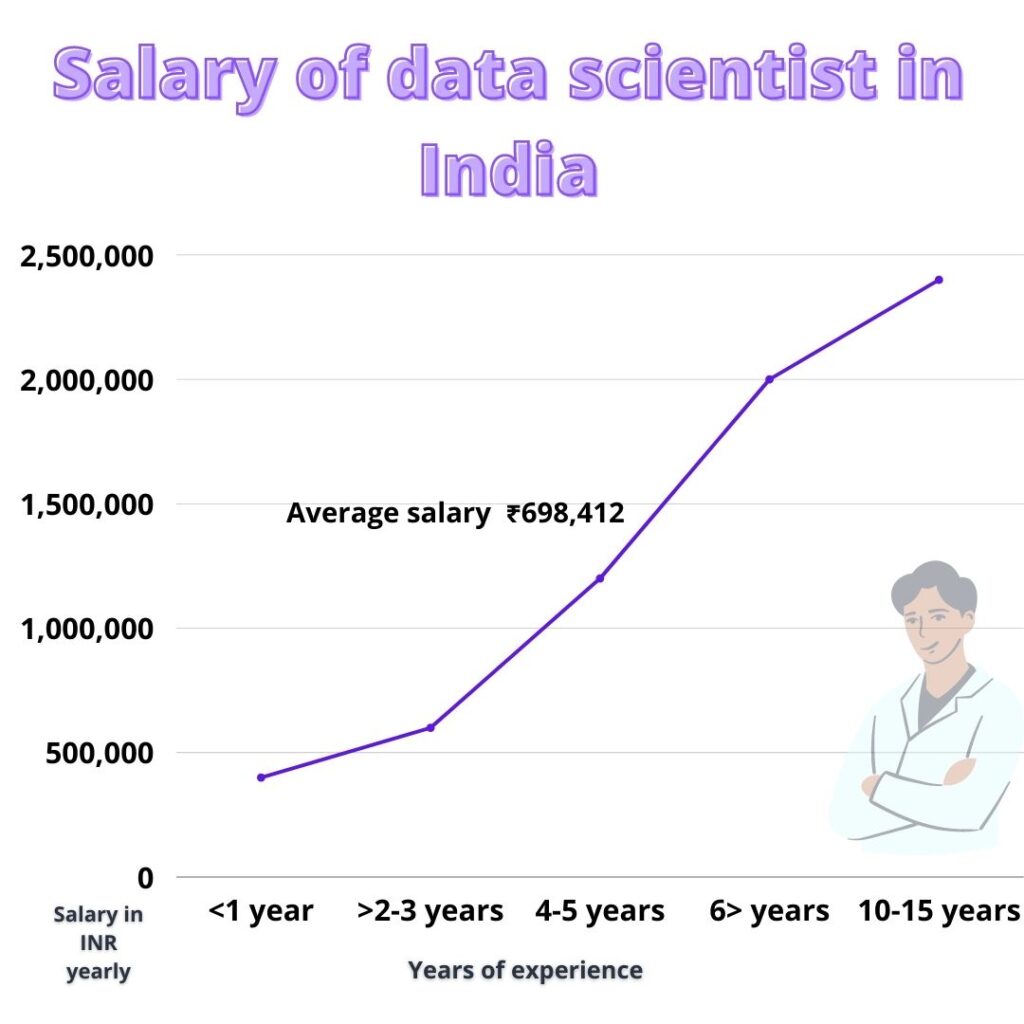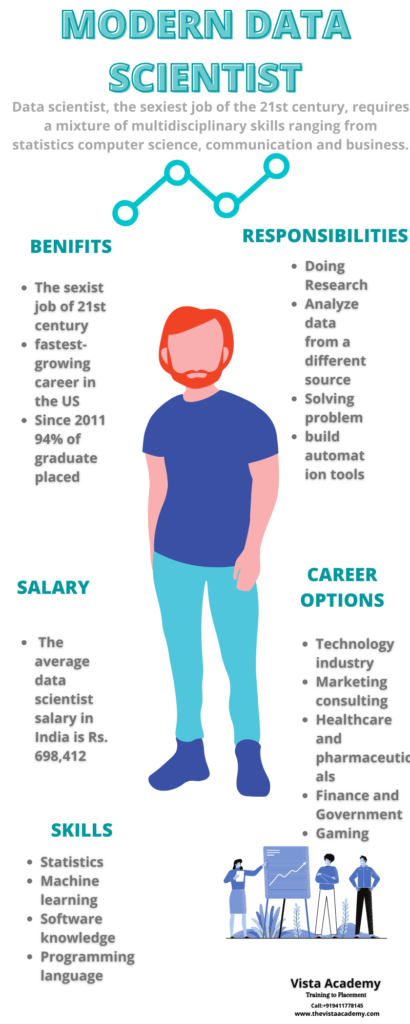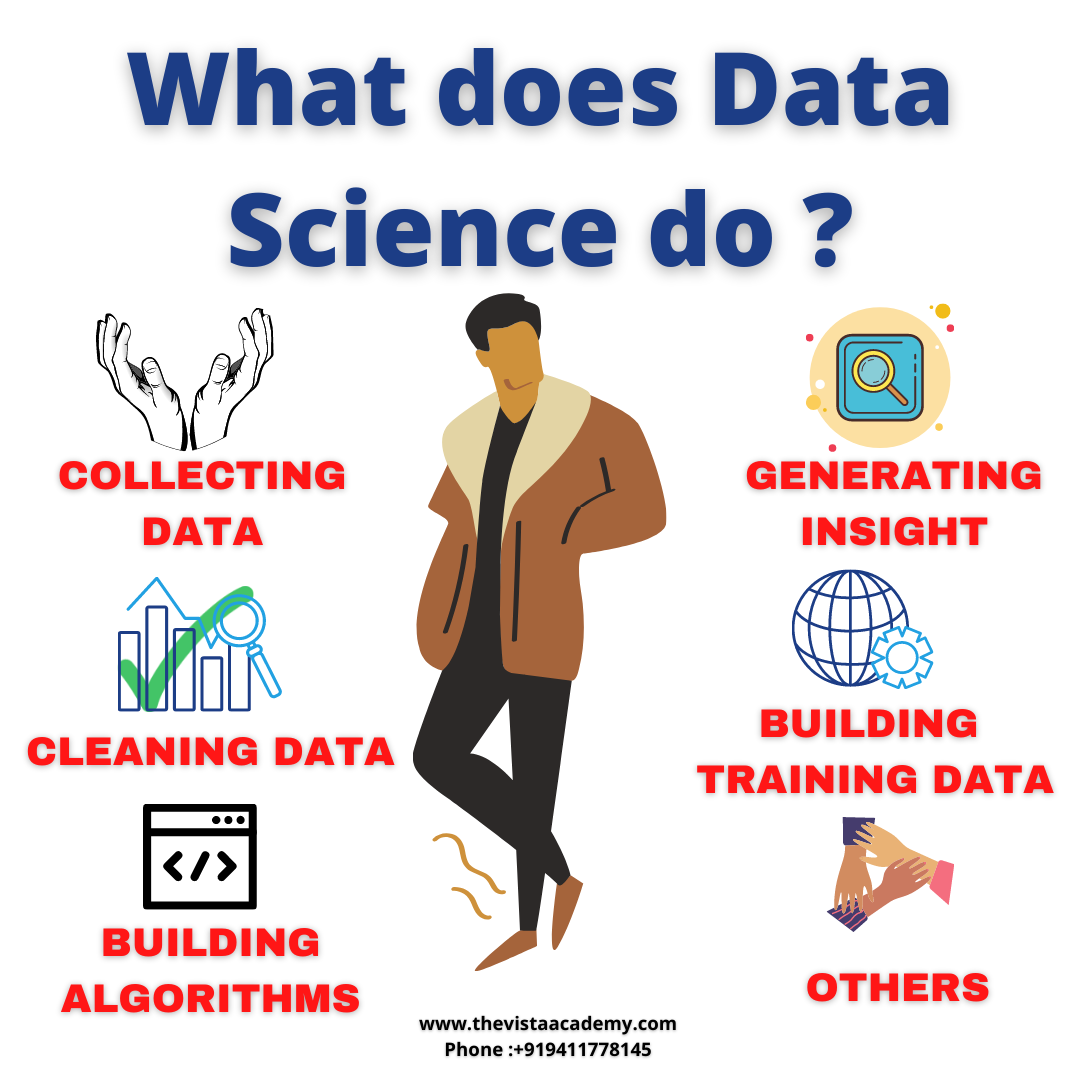What Does a Data Scientist Do? Role and Responsibilities
In the past decade, data scientists have become necessary assets and are present in almost all organizations. These professionals are well-rounded, data-driven individuals with high-level technical skills who are capable of building complex quantitative algorithms to organize and synthesize large amounts of information used to answer questions and drive strategy in their organization.
Table of Contents
ToggleWhy Become a Data Scientist?
As increasing amounts of data become more accessible, large tech companies are no longer the only ones in need of data scientists. The growing demand for data science professionals across industries, big and small, is being challenged by a shortage of qualified candidates available to fill the open positions
The need for data scientists shows no sign of slowing down in the coming years. LinkedIn listed data scientist as one of the most promising jobs in 2021, along with multiple data-science-related skills as the most in-demand by companies
Common Data Scientist Job Titles
Data scientists:
Design data modeling processes to create algorithms and predictive models and perform custom analysis
Data analysts:
Manipulate large data sets and use them to identify trends and reach meaningful conclusions to inform strategic business decisions
Data engineers:
Clean, aggregate, and organize data from disparate sources and transfer it to data warehouses.
Business intelligence specialists:
Identify trends in data sets
Data architects:
Design, create, and manage an organization’s data architecture
Data Science Career Outlook
By many accounts, becoming a data scientist is a highly desirable career path. From startups to Fortune 500s to government agencies, organizations are seeing the value in capitalizing on big data.
Data scientists are relatively scarce, meaning it’s now an opportune time to upskill and enter the field.
Role and Responsibilities of Data Scientist
1 Ask the right questions to begin the discovery process.Solving business problems through undirected research and framing open-ended industry questions
2. Acquire data.Extract huge volumes of structured and unstructured data. They query structured data from relational databases using programming languages such as SQL. They gather unstructured data through web scraping, APIs, and surveys.
3. Process and clean the data.Thoroughly clean data to discard irrelevant information and prepare the data for preprocessing and modeling
4. Integrate and store data.Perform exploratory data analysis (EDA) to determine how to handle missing data and to look for trends and/or opportunities
5. Initial data investigation and exploratory data analysis.Employ sophisticated analytical methods, machine learning and statistical methods to prepare data for use in predictive and prescriptive modeling
6. Choose one or more potential models and algorithms.Discovering new algorithms to solve problems and build programs to automate repetitive work
7. Apply data science techniques, such as machine learning, statistical modeling, and artificial intelligence
8. Measure and improve results.Recommend cost-effective changes to existing procedures and strategies
9. Present final result to stakeholders.Communicate predictions and findings to management and IT departments through effective data visualizations and reports
10. Make adjustments based on feedback
11. Repeat the process to solve a new problem
Data Science vs. Data Analytics
Data analysts examine data sets to identify trends and draw conclusions, Data Analysts collect large volumes of data, organize it, and analyze it to identify relevant patterns. After the analysis part is done, they strive to present their findings through data visualization methods like charts, graphs, etc. Thus, Data Analysts transform the complex insights into business-savvy language that both technical and non-technical members of an organization can understand.
Data Scientists use a combination of Mathematical, Statistical, and Machine Learning techniques to clean, process, and interpret data to extract insights from it. They design advanced data modeling processes using prototypes, ML algorithms, predictive models, and custom analysis.

Data Scientist Salary in India in 2021
The average data scientist’s salary is ₹698,412. An entry-level data scientist can earn around ₹500,000 per annum with less than one year of experience. Early level data scientists with 1 to 4 years experience get around ₹610,811 per annum


